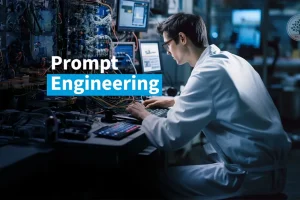The rapid pace of innovation in artificial intelligence (AI) brings exciting new capabilities in areas like natural language processing, computer vision, robotics, and more. However, the diversity of systems makes evaluating progress a significant challenge.
Closed, proprietary benchmarks used by some companies often measure drastically different capabilities using inconsistent methodologies. This makes fair comparisons between AI systems difficult, hindering transparency and objective evaluation.
Open-sourcing standardized benchmarks offers a solution by enabling neutral, apples-to-apples comparisons between systems. Shared benchmarks foster collaboration in the AI community, accelerate innovation, and pave the way for developing more capable, trustworthy AI.
The Need for Open, Standardized Benchmarks in AI
Benchmarking is essential for tracking progress in AI capabilities over time. However, evaluating AI systems has traditionally faced several key challenges:
- Proprietary benchmarks designed by individual companies are often closed-source and focus on narrow metrics.
- Inconsistent testing without standardized environments and methodologies introduces evaluation bias.
- Limited reproducibility makes validating and building on prior research difficult.
These limitations curtail transparency and objective evaluation. Researchers have limited insight into how proprietary benchmarks are designed. And a lack of consistency makes comparing benchmark results problematic.
Open-sourced, community-led benchmarks with standardized tasks and testing protocols address these challenges. Anyone can inspect their design and methodology, enhancing transparency. Consistent testing enables fair comparisons between disparate systems based on capabilities.
Benefits of Open, Standardized Benchmarks
Shared benchmarks provide several key advantages for AI progress:
Transparency and Trust
Publicly available benchmarks allow researchers to scrutinize methodology and identify potential sources of bias. This oversight enhances integrity in benchmark design and fosters trust in results.
Fair Evaluations
Standardized testing environments, datasets, and measurement metrics enable direct comparison of different systems’ capabilities. Researchers can better discern true strengths and limitations.
Collaboration
As open resources, benchmarks enable collaboration between the companies, researchers, and developers working to advance AI. Shared goals can accelerate innovation.
Reproducibility
The accessibility of standardized benchmarks also makes replicating benchmark results more feasible. This reproducibility strengthens the scientific rigor of AI research.
Overall, the transparency, fairness, collaboration, and reproducibility stemming from shared benchmarks helps the AI community channel efforts into driving real progress.
Current Uses of Open Benchmarks in AI
Open benchmarks are already demonstrating value across AI domains like natural language, vision, and robotics.
Language Understanding
In natural language, benchmarks like GLUE (General Language Understanding Evaluation) are becoming vital for advancing language-capable AI systems. GLUE provides a suite of tests for critical language understanding capabilities.
Systems like Google’s BERT demonstrate cutting edge performance on GLUE. And startups often validate their language models using these influential benchmarks.
Computer Vision
In computer vision, datasets like ImageNet and CIFAR-10 enabled the breakthrough Image Classification models that catalyzed the deep learning revolution. More recently, benchmarks like Open Images have continued accelerating progress.
Robotics
To advance real-world robotics skills, initiatives like RoboCup hold standardized competitions for abilities like soccer and logistics. The accessibility and transparency of tasks and scoring drives rapid innovation.
These examples demonstrate the immense value standardized benchmarks bring to objective AI evaluation and advancing state-of-the-art across applications.
Considerations in Open Benchmark Design
Effectively designing benchmarks does require careful consideration around areas like:
Maintaining Neutrality
Benchmarks themselves can potentially introduce biases if not inclusive and transparent. Community collaboration and auditing help create balanced evaluations.
Updating Frequently
As AI evolves rapidly, benchmarks require frequent updates to stay relevant. Maintaining momentum around revisions is key but can prove challenging.
Avoiding Shortcuts
There’s some risk of “overfitting” AI systems to benchmark tasks rather than general capabilities. But sound benchmark design can mitigate this.
Overall though, the benefits of openness and standardization outweigh the risks, especially with oversight from the community.
The Door to AI’s Bright Future
Open-sourcing standardized benchmarks represents a milestone for AI progress. Shared benchmarks directly enable fairer comparisons, collaboration, and reproducibility – helping overcome evaluation limitations.
And the current traction for benchmarks in natural language, computer vision, and robotics highlight the immense potential impact. Objective insights into real AI strengths and weaknesses can focus efforts on advancing core capabilities.
As AI plays an increasingly prominent role across industries, open benchmarks also build vital trust and transparency with non-experts. Understanding how systems fail or have yet to improve grants realistic perspectives on current limitations.
Ultimately, embracing openness and collaboration will unlock AI’s brightest future. The doors are already opening to a new era of innovation through benchmarks. One where researchers collectively uplift AI to properly serve humanity.













Add Comment